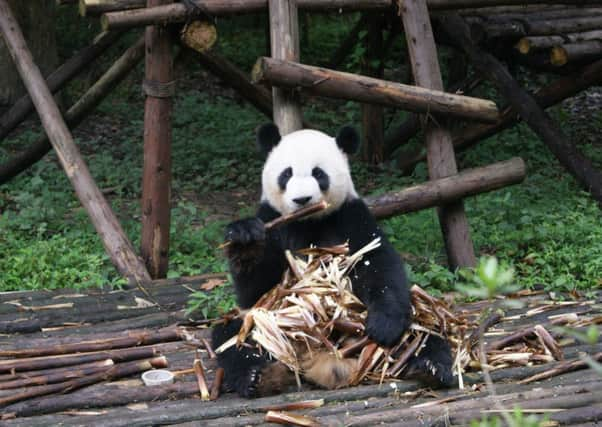Other side of the bamboo curtain


China is a country so enormous that its cities make London feel like a village. On our blustery little island, the capital feels like a mighty metropolis but after a few days in the vast, sweeping, timeless landscape of China, London shrinks to just another small pin on the map.
China is so huge – and the list of noteworthy sights so long – that it can be hard to know where to start, but don’t let that put you off.
Advertisement
Hide AdAdvertisement
Hide AdWe began our two-week adventure in the south-west at Chengdu, after a very comfortable, direct 10-hour British Airways flight from London Heathrow, and a swift BA connection from Manchester.
Chengdu is a great place to get your bearings in China. It’s not as big as Shanghai or Beijing but has a pleasant main square, a lively public park where you can take traditional Chinese tea by the lake, and an array of Buddhist temples, with bustling side streets which capture the imagination with their vivacious colours and smells.
However, the main attraction in Chengdu – and one of my favourite things in China – is definitely the pandas. Chengdu has provided a natural habitat for these beautiful beasts for millennia, and is now home to the Research Base of Giant Panda Breeding, a centre dedicated to conserving their declining numbers.
And the centre’s resident pandas certainly know how to play for the adoring crowds –wrestling, scratching their rear ends on branches and getting stuck up trees, which all had visitors in stitches and camera shutters whirring. The attractive parkland is also home to exotic red pandas, black swans and an engaging museum explaining why the pandas became endangered.
Advertisement
Hide AdAdvertisement
Hide AdInternal flights are frequent and affordable in China, and we travelled on to Shanghai – an ultra-modern, forward-looking city which seems to have moved on from its colonial past and created its own vision for the future. Wealth is evident: rows of designer shops have made their home in the eminent shipping buildings from an earlier era.
Walking along The Bund riverside promenade, it’s hard to believe the imposing Pudong financial district across the water came into existence only 20 years ago. Crazily tall skyscrapers jostle for your attention as they try to outdo each other and, for £12-20, you can climb three of the best and drink in the views. At night, Shanghai really comes into its own: the gleaming towers are lit up like Christmas trees, tourist boats sail the river and the urge to get out your camera is irresistible.
Beijing is Shanghai’s grittier cousin in the north – less glossy, more jam-packed, but also cheaper and home to a plethora of China’s top attractions. From here, you can travel to the awe-inspiring Great Wall 70km away, and also visit many of the landmarks in Chinese history.
Tiananmen Square is ringed in fierce security but still resonates with significance. Opposite it is the Forbidden City, a never-ending succession of ornate palaces which stand testimony to the might of two imperial dynasties in the days before the Republic – represented with a portrait of Chairman Mao near the main gate.
Advertisement
Hide AdAdvertisement
Hide AdMy favourite part of Beijing was Summer Palace, an elegant, overwhelmingly huge park dominated by a sea-sized boating lake. Once a royal playground, it is now a welcome escape from the city’s sticky-hot streets and merits a whole day’s exploration.
The Terracotta Warriors in Xian was our last stop but one that cannot be missed. Emperor Qin Shi Huang’s army of thousands of hand-crafted soldiers were built to guard his tomb and they did a great job – the life-sized characters lay undiscovered beneath the ground for centuries, until a farmer stumbled across them 40 years ago. The endless rows of military men, restored by archaeologists, are breathtaking and a testament to how advanced the ancient Chinese were.
Xian itself is an immensely likeable city, from its historic city walls to the bustling street stalls of the sense-assaulting Muslim quarter.
China is a melting pot of contrasts, where the ancient sits alongside the modern and where western influences find a place among a strong eastern culture. It’s not the destination for a relaxing break, but if you want to engage your brain and fill your photo album to the brim, it offers a once-in-a-lifetime opportunity.
Factfile
Advertisement
Hide AdAdvertisement
Hide AdJenny flew to China with British Airways, which operates five return flights a week between London Heathrow and Chengdu. Daily connections to Heathrow are available from Manchester.
All-inclusive return World Traveller fares Manchester-Heathrow-Chengdu start at £480, and include a generous baggage allowance, meals and drinks on board. See www.ba.com for more details.